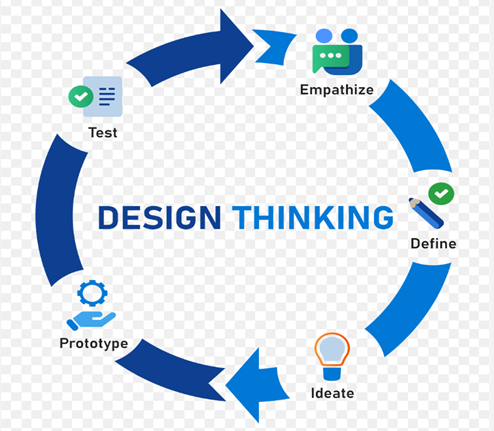Surabhi K S
The 9th edition of the Global Testing Retreat 2024!
About Speaker

Surabhi K S
Senior Quality Assurance Analyst
EPSILON
Proactive Big Data and Database Tester with a strong emphasis on testing, data analysis, and deployment processes, as well as proficiency in reporting tools. Worked on projects that utilized a variety of technologies, including Spark, Python, Java, SQL, and proprietary ETL tools. Experienced across various sectors such as telecom, digital media, banking, and digital marketing, with a commitment to ensuring data integrity and efficiency in high-volume environments.
Outside of work , I am passionate about social causes , particularly Mental health awareness . I have mentored mental health awareness programs for schools. And participated in multiple CSR initiatives at workplace. I also enjoy trekking and use Yoga as a calming practice .
More Speakers
Abstract:
This paper explores the integration of design thinking principles into big data testing, aiming to foster innovation and collaboration. By leveraging the stages of design thinking we propose a structured approach to address the complexities of testing large datasets. This methodology promises enhanced problem-solving, user-centric solutions, and iterative improvements in big data testing practices.
Introduction:
Big data testing presents unique challenges due to the volume, variety, and velocity of data. Traditional testing methods often fall short in addressing these complexities. Design thinking, with its human-centered approach, offers a robust framework for innovative problem-solving. This paper outlines a comprehensive strategy for applying design thinking to big data testing, aiming to improve testing effectiveness and efficiency.
Design Thinking in Bigdata testing:
- Empathy in Requirements Gathering:
Engaging with stakeholders and customers to deeply understand their needs, requirements, and business challenges is essential. The focus is to align project scope with technical requirements through Functional Specification Documents (FSDs), Business Specification Documents (BRDs), design walkthroughs, data flows, and feasibility checks. Applying the design principle of Empathy in big data testing during the early stages of the STLC ensures improved data quality and user-centric scenarios.
- Defining Test Objectives and Scenarios:
Defining the objectives and creating detailed scenarios by applying design principles emphasizes validating the functionality, performance and reliability of big data systems and applications. These scenarios mainly focus on the velocity and variety data which includes,
- Data ingestion Scenarios: Identifying the detailed scenarios to validate the system’s ability to handle the various data source, types of data, data ingestion pipelines and other related ingestion tools.
- Data processing Scenarios: Develop test scenarios to evaluate the efficiency, data transformations, data processing speed, resource utilization and aggregation processes.
- Data Storage and Response Scenarios: Define test scenarios for verifying data storage solutions, ensuring accessibility, availability, scalability, query response, data retention, retrieval and ability to handle growing large data sets.
- Visualization: Defining test scenario to evaluate the usability of data visualization tools, ensuring they accurately represent the showcase the underlying of data

- Ideating Test Strategies:
Incorporating design principles into the test strategy involves brainstorming and planning innovative methods to validate the big data system and encourages coming up with possible solutions to address the problems in different types/stages of testing.
- Functional/Non-Functional: Focuses primarily on data quality, performance, integration, compliance, security, maintainability, data migration, ETL testing by utilizing different data testing techniques such as batch and real-time stream testing to validate the bigdata using innovative ideas.
- Automation: Utilizing tools for test data/synthetic data generation to mimic the real-world data pattern and volumes for testing purpose. Developing custom scripts for the data ingestion and validation and completeness check.
- Prototyping Test Cases
Creating initial versions of testcases that prioritize user centric design, enables validation and optimization of test strategies. Applying this design thinking principle effectively handles the complexity of big data environments.
- Testing and Iterative Feedback
This design principle ensures the testing process is iterative to improve the system’s functionality, performance, and user experience with continuous assessment and feedback.
- Continuous Integration/deployment (CI/CD): Automating the build, testing processes and deployment to deliver the changes to production supported by rigorous testing.
- Feedback-driven Development: Iteratively improving the system based on the feedback, analysis and performance with the continuous development and regression of large dataset and applications.
How can Testers benefit from Design Thinking?
As testers, we need to understand the end user’s needs and desirability so that we can aid the development in the right direction. Following are a few of the areas where this design mindset is needed:
- Brainstorming Innovative strategies:
During the testing phase of a product, generating creative ideas to test the product is one of the main principles of design thinking. Brainstorming for innovative ideas on the lines of different user personas, demographics, First Time User Experience etc., helps in coming up with creative and systematic strategy.
- Stakeholder Interaction:
Stakeholder interaction in design thinking from a tester’s perspective involves actively participating in all stages of the design process, providing valuable insights, and working closely with the design team to deliver a high-quality product that meets user needs. Testers should maintain open communication with the design team throughout the project, sharing insights from testing activities and collaborating on solutions to any issues that arise.
- Curiosity:
Curiosity is a cornerstone for testers practicing design thinking. As we question the biases, assumptions, user needs, and desires, we tend to deepen our knowledge about the product. Being curious at every step helps us in early identification of risks.
- Data Narrative:
Storytelling serves as a powerful tool to convey complex ideas. By integrating data narration with design thinking, we can effectively communicate the journey from data collection to insightful conclusions. This approach ensures that user perspectives are prioritized and integrated into the early development process.
Conclusion:
Applying design thinking principles to big data testing offers a structured and innovative approach to address the unique challenges of this domain. By focusing on empathy, clear problem definition, creative ideation, practical prototyping, and iterative testing, we can enhance our testing strategies, leading to more reliable and user-centric data solutions. So, design thinking is an essential skill for testers to have in today’s fast-paced, rapidly changing world.

